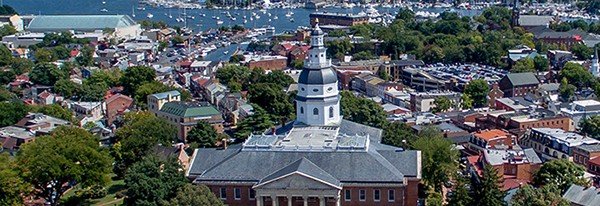Date:
 Earlier this month, City Dock experienced the third highest water level in the city’s history, reminding us of the fragility of Annapolis’s historic landscape and the importance of the City’s accelerated planning effort to protect it. Environmental resiliency is the key feature of this $90 million effort. A comprehensive planning strategy is critical so that we can appropriately respond to threats posed by climate change with the magnitude of the City Dock project. Working together, we will reduce our vulnerability while protecting our local businesses, our buildings, and our history.
Earlier this month, City Dock experienced the third highest water level in the city’s history, reminding us of the fragility of Annapolis’s historic landscape and the importance of the City’s accelerated planning effort to protect it. Environmental resiliency is the key feature of this $90 million effort. A comprehensive planning strategy is critical so that we can appropriately respond to threats posed by climate change with the magnitude of the City Dock project. Working together, we will reduce our vulnerability while protecting our local businesses, our buildings, and our history.
Historic Annapolis (HA) promotes resiliency planning and City Dock enhancements, and we support many elements of the City’s application currently before the Planning Commission. HA has been actively engaged in City Dock discussions for years and, recently, testified several times in support of last year’s resiliency legislation. As stewards of three buildings in the 100-year flood plain, two of which belong to the State of Maryland, we too have ‘skin in the game’ and share the growing sense of urgency to protect low-lying properties. We applaud the City for assembling a dynamic team of professionals to implement the reimagining of City Dock and for their close coordination with our state, county, and local partners.
This project is critically important, but the plan before the Planning Commission is incomplete. The City has opted for a phased approach for this ‘Major Site Design Plan’ for reasons such as funding and timing, but while implementation can be phased, planning should not be. We look to our immediate neighbor – USNA – who has established a complete and comprehensive resiliency plan, paired with phased implementation. We stress the necessity of completing the flood barrier protection plan around Ego Alley, from the park side on Dock Street to the lower side on Compromise Street. While many challenges present themselves here, including private property ownership, flood waters have no regard for property lines. This was best illustrated by the City’s test pilot case with deployable barriers at the bottom of Newman Street during the recent extreme storm event. We urge the City to prioritize the flood barrier protection plan—in its entirety—and the funding for its implementation. Both sides of Ego Alley must be protected from flood waters to protect City Dock.
Additionally, the Planning Commission is being asked to approve a plan that eliminates public amenities on public land within the project area without addressing where or when they will be replaced—namely the harbormaster’s office and public restrooms. We appreciate that the City recognizes that the proposed Maritime Welcome Center warrants more public input (an assessment that we heartily agree with); hence the reason it has been separated from this phase of the planning and review process. We remain concerned, however, that by approving a partial plan, the City’s preferential placement for this building is predetermined. We also remain concerned that Annapolis’s million-dollar view, to and from the water, will not be improved by moving the harbormaster from Craig Street to a larger building on the water’s edge, as the project team attests.
Major Site Design Plan approval, according to the code, rests with the Planning Commission. Because this plan will not advance to the full City Council, we trust the Planning Commission and City staff will address unanswered questions about issues such as the future funding and maintenance of this new city park, emergency egress, pedestrian access for those with mobility issues, and other unresolved questions.
HA continues to be hopeful about Annapolis’s future by incorporating climate resilience into the long-term preservation of our landmark heritage. Our culture, history, and centuries-old architecture draw visitors and residents to the city center, fostering economic vitality and community pride. Annapolis is ready for something new to preserve the old. For future generations, let’s get it right.



